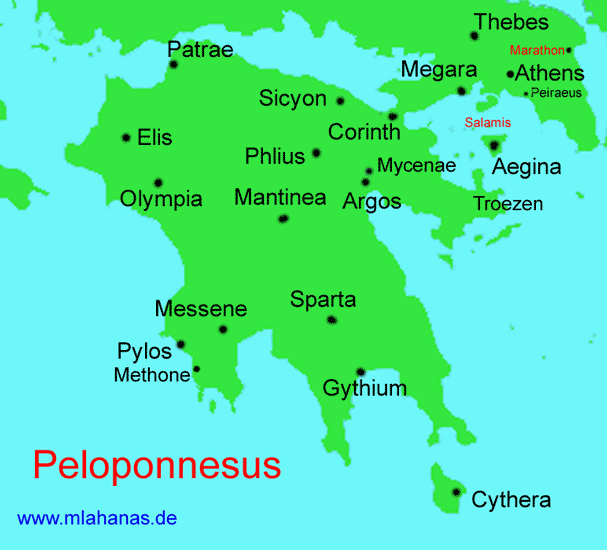.

Gytheio (Greek, Modern: Γύθειο, Ancient/Katharevousa: -on) is a town of Laconia in Greece, long known as the seaport of Sparta some 30 miles inland. It lies at the northwestern end of the Gulf of Laconia, in a fertile small plain around the mouth of the Gythius River.
The reputed founders of ancient Gythium were Heracles and Apollo, who frequently appear on its coins: the former of these names may point to the influence of Phoenician traders, who, we know, visited the Laconian shores at a very early period. In classical times it was a community of perioeci, politically dependent on Sparta, though doubtless with a municipal life of its own.
In 455 BC, during the first Peloponnesian War, it was burned by the Athenian admiral Tolmides. In 370 BC Epaminondas besieged it unsuccessfully for three days. Its fortifications were strengthened by the tyrant Nabis, but in 195 BC it was invested and taken by Titus and Lucius Quintius Flamininus, and, though recovered by Nabis two or three years later, was recaptured immediately after his murder (192 BC) by Philopoemen and Aulus Atilius, and remained in the Achaean League until the league's dissolution in 146 BC.
Subsequently Gythium formed the most important of the Eleutherolaconian towns, a group of twenty-four, later eighteen, communities leagued together to maintain their autonomy against Sparta and declared free by Caesar Augustus. The highest officer of the confederacy was the general, who was assisted by a treasurer (rauias), while the chief magistrates of the several communities bore the title of ephors.
Pausanias (iii. 21 f.) has left us a description of the town as it existed in the reign of Marcus Aurelius, the agora, the Acropolis, the island of Cranae (Marathonisi) where Paris celebrated his nuptials with Helen of Troy, the Migonium or precinct of Aphrodite Migonitis (occupied by the modern town), and the hill Larysium (Koumaro) rising above it. The numerous remains extant, of which the theatre and the buildings partially submerged by the sea are the most noteworthy, all belong to the Roman period.
Gythium is thirty stades distant from Aegiae, built by the sea in the territory of the Free Laconians, whom the emperor Augustus freed from the bondage in which they had been to the Lacedaemonians in Sparta. ...The people of Cythium say that their city had no human founder, but that Heracles and Apollo, when they were reconciled after their strife for the possession of the tripod, united to found the city. In the market-place they have images of Apollo and of Heracles, and a Dionysus stands near them. In another part of the city are Carnean Apollo, a sanctuary of Ammon and a bronze image of Asclepius, whose temple is roofless, a spring belonging to the god, a holy sanctuary of Demeter and an image of Poseidon Earth-embracer. Pausanias, Description of Greece, Laconia
Additional Information of Gythium today
References
- G. Weber, De Gytheo et Lacedaemoniorum rebus navalibus (Heidelberg, 1833)
- W. M. Leake, Travels in the Morea, i. 244 foIl.
- E. Curtius, Peloponnesos, ii. 267 foll. Inscriptions: Le Bas-Foucart, Voyage archéologique, ii. Nos. 238-248 f.
- Collitz-Bechtel, Sammlung d. griech. Dialekt-Inschriften, iii. Nos. 4562-4573; British School Annual, x. 179 foll.
This article incorporates text from the public domain 1911 Encyclopædia Britannica.
| Ancient Greece
Science, Technology , Medicine , Warfare, , Biographies , Life , Cities/Places/Maps , Arts , Literature , Philosophy ,Olympics, Mythology , History , Images Medieval Greece / Byzantine Empire Science, Technology, Arts, , Warfare , Literature, Biographies, Icons, History Modern Greece Cities, Islands, Regions, Fauna/Flora ,Biographies , History , Warfare, Science/Technology, Literature, Music , Arts , Film/Actors , Sport , Fashion --- |
Retrieved from "http://en.wikipedia.org/"
All text is available under the terms of the GNU Free Documentation License


